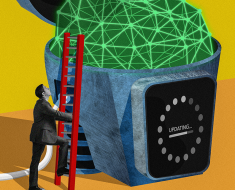![]()
[Submitted on 11 Feb 2024]
Download a PDF of the paper titled X-LoRA: Mixture of Low-Rank Adapter Experts, a Flexible Framework for Large Language Models with Applications in Protein Mechanics and Design, by Eric L. Buehler and 1 other authors
Download PDF
HTML (experimental)
Abstract:We report a mixture of expert strategy to create fine-tuned large language models using a deep layer-wise token-level approach based on low-rank adaptation (LoRA). Starting with a set of pre-trained LoRA adapters, we propose a gating strategy that uses the hidden states to dynamically mix adapted layers, allowing the resulting X-LoRA model to draw upon different capabilities and create never-before-used deep layer-wise combinations of adaptations are established to solve specific tasks. The design is inspired by the biological principles of universality and diversity, where neural network building blocks are reused in different hierarchical manifestations. Hence, the X-LoRA model can be easily implemented for any existing large language model (LLM) without a need for modifications of the underlying structure. We develop a tailored X-LoRA model that offers scientific capabilities including forward/inverse analysis tasks and enhanced reasoning capability, focused on biomaterial analysis, protein mechanics and design. The impact of this work include access to readily expandable, adaptable and changeable models with strong domain knowledge and the capability to integrate across areas of knowledge. With the X-LoRA model featuring experts in biology, mathematics, reasoning, bio-inspired materials, mechanics and materials, chemistry, and protein mechanics we conduct a series of physics-focused case studies. We examine knowledge recall, protein mechanics forward/inverse tasks, protein design, and adversarial agentic modeling including ontological knowledge graphs. The model is capable not only of making quantitative predictions of nanomechanical properties of proteins, but also reasons over the results and correctly predicts likely mechanisms that explain distinct molecular behaviors.
Submission history
From: Markus Buehler [view email]
[v1]
Sun, 11 Feb 2024 10:23:34 UTC (40,914 KB)

